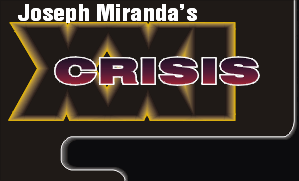
CONTEXT
DESIGN INTRODUCTION
- The CRISIS XXI effort is to create a predictive tool to help decision-makers assess the threat level of potential terrorists so that proactive measures can be taken to neutralize such threats. The Phase I boardgame acts as a playable design document and test bed to aid in the Phase II development of a functional computer simulation.
- The design emphasizes threats posed by terrorist entities capable of deploying Weapons of Mass Destruction (WMD). It also shows the full range of terrorist and terrorism counteraction operations.
- The computer simulation will utilize Intelligent Autonomous Agent (AI) technology funded by Hexagon Interactive (under AFOSR contract F49620-98-C-0056) and developed under subcontract by USC. (In the boardgame prototype, these agents are simulated via using a variety of matrices.)
CRISIS XXI is intended as a dynamic model. Players need to evaluate many changing variables, including the behavior of forces they control as well as enemy and neutral forces, in order to understand terrorist intentions and capabilities. Players need to understand that there are no simplistic answers. Rather, operations in the terrorism and terrorism counteraction fields are characterized by the interplay of many psychological, political, social and military factors.
The issue of terrorist actions has to be understood within this context. Eg: The use of WMD is predicated upon certain "threshold" levels being reached and surpassed, such that the more violent a response or counter-response, the more likely one side or the other will be likely to go to a higher level of violence. This is based on the general experience of warfare in which the use of greater levels of violence removes inhibitions about violations of standards of warfare and unleashes unpredictable forces.


